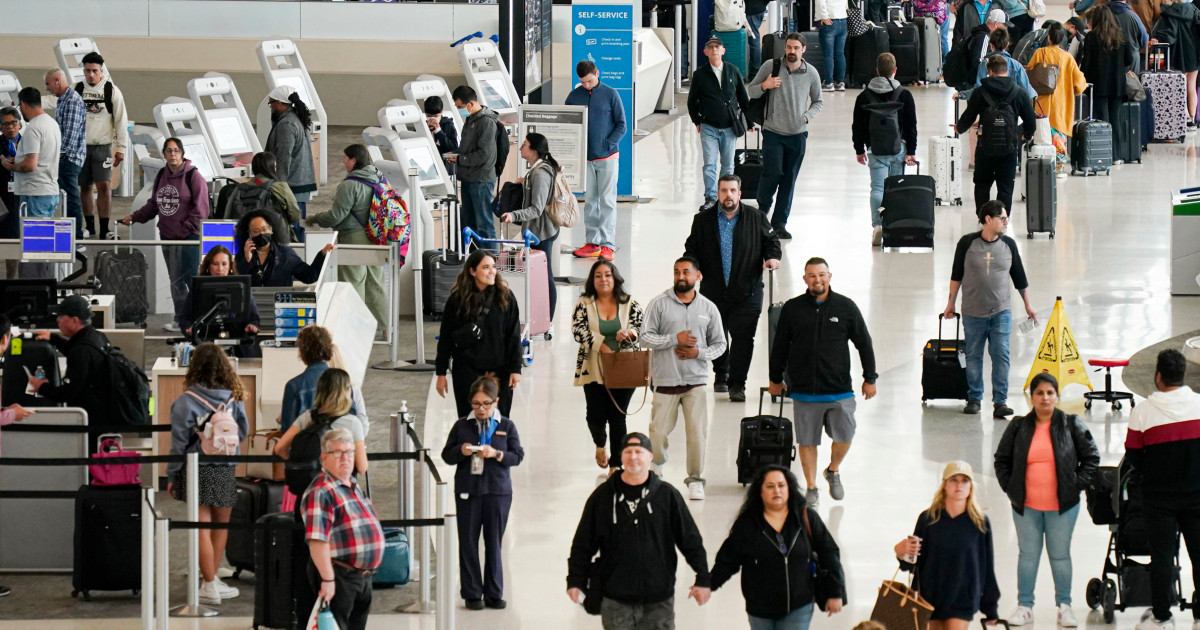The TSA said Friday’s travel broke a record set in November of nearly 2.91 million air passengers screened.
The U.S. Transportation Security Administration (TSA) said it screened 2.95 million airline passengers on Friday, the highest number ever on a single day.
The record travel coincides with the Memorial Day weekend that marks the beginning of the U.S. summer travel season. Last week, a group representing major U.S. airlines forecast record summer travel with airlines expected to transport 271 million passengers, up 6.3% from last year.
The TSA said Friday’s travel broke a record set in November of nearly 2.91 million air passengers screened. Five of the 10 busiest ever travel days have been since May 16, the agency said.



Maybe a bit lower, but I’d hesitate to say “far lower”. Rail would reduce the demand for very short (hour or less) flights, and that’s why countries like France have banned such flights entirely. But even in countries with very developed rail, the cost of rail travel often ends up more than the cost of flying for medium to long distances. That was my experience in China, which has plenty of rail options, but everyone loves to use Japan as the example to follow for “ideal rail”, so I’ll look at Japan to compare.
According to Japan Rail, a 1-way bullet train ticket from Tokyo to Kyoto is about ¥8,000, plus either a roughly ¥5,000 (reserved) or ¥6,000 (non-reserved) surcharge, so you’re looking at ¥26,000 round trip, taking about 3 hours each way. Or, going to Japan Airlines, you can fly round trip from Tokyo to Kyoto and back for about ¥13,000, taking 1.5 hours each way. I was able to find cheaper flights listed on Google Flights as well.
Despite supposedly having a very robust, very comfortable rail experience in Japan, flying is half the time and half the price. I don’t know if that’s a result of government subsidies supporting air travel over rail travel or what, but to me it seems hard to compete.
The only difference is that you can apparently just waltz up to a train station in Tokyo and buy a ticket day-of, no security to get through and no checked baggage to worry about, but I can’t imagine such spur-of-the-moment travel over such distances is the norm.
It’s pretty natural not to reserve seats on shinkansen, because you can find seats unless you are travelling at peak hours (and there are trains every 20 minutes or better)
The travel time to and from airport, and the baggage+security easily eats into the 1.5 hour savings. Same day fare on shinkansen remains constant, unlike 30k+ that flights demand.
On shinkansen, you have lots of leg room compared to LCC seats. There’s also enough space to move, talk and option to reconfigure the seats for a group of 4 or 6 travelers. There’s cell connectivity (and decent wifi onboard) so you don’t have to pay through your nose for in flight WiFi. The toilets are spacious. There’s dedicated place to talk on the phone. Less noisy and fewer bumps than a flight.
This makes the bullet trains really attractive for business and family travels (with kids). You don’t need to plan beforehand and there’s less inconvenience compared to flight. Moreover, the cost also balances out if you’re traveling to a smaller city with poor air connectivity.
These kind of options actually allow spur of the moment travels over such distances.
I know plenty of people who plan and use bus and flights due to the cost benefit, but also tons of people prefer the hassle free travel on shinkansen
Great breakdown. But I did want to mention that a person can absolutely walk into an airport and go to a ticket counter and purchase an airplane ticket “spur of the moment.” You may not be able to get on every flight (due to overbooking) but someone will be able to help navigate that if and when it’s necessary.